I’ll admit right now, the announcement of Psychonauts 2 at The Game Awards 2015 was a shock to me. What wasn’t a shock was that it would be coming to fruition thanks in part to crowdfunding. The minute it was announced, my immediate reaction was “…and the Kickstarter’s live right now!” That response was slightly misguided. After all, Double Fine founder Tim Schafer is a member of the founding board for Fig.co. Of course it would come to Fig for funding! In any case, the project has done obscenely well for itself thus far. It immediately surpassed the funding achieved by Anchors in the Drift and Outer Wilds and is tracking to receive far more funds than Double Fine Adventure did back in 2012. For those who don’t recall, Double Fine Adventure was effectively the landmark moment when millions discovered Kickstarter as they excitedly raised $3.3 million for a modern day point and click adventure.
Psychonauts 2 has its crowdfunding goal set at $3.3 million exactly. And, unlike the Kickstarter which made that by the end, we’re seeing this project make over that by the end. Just as Double Fine Adventure introduced many gamers to Kickstarter, Psychonauts 2 is introducing Fig to an immense audience. Honestly, it’s a bit odd that they didn’t set this game as their very first project. Although Outer Wilds succeeded, it certainly didn’t draw nearly as much attention. Why is Psychonauts 2 so popular? The original Psychonauts was undoubtedly a really cool action 3D platformer at a time when the genre had all but dried up. Although it began as a really niche release, over the years it has generated increasing amounts of attention and affection.
For this campaign, Fig has changed things up quite a bit. As was previously announced, this project is the first which allows for “fan” investment alongside accredited investment. By fans, they mean people who are not accredited, but will still be able to opt in to investment status rather than simply pledging to rewards like we’re used to. They also made a move that will be a big help toward getting more fan investors on board. Now, the minimum price to invest is $500 — half of the previous barrier of $1000. Provided future Fig campaigns keep the investment minimum around this point it should prove quite helpful at gathering more investment interest. That’s my belief for now, at least. Future campaigns will reveal whether or not a lower barrier really is all that’s needed to lure additional investment.
In the past, clicking on the Investment page on Fig led to a rather droll page which explained potential payouts, definitions, and logistics in detail. Unfortunately, it was also a pretty dull page, even though it did answer (some) key questions for investors. Alongside the launch of Psychonauts 2, FIg has completely redone the investment terms page. Now it’s bright, simplistic, and even offers a calculator to consider what funds you might receive down the line. Detailed legal information is now hosted as multiple pages on a Dropbox link. This is an ingenious tweak for two big reasons. For one, it offers an incredibly simple way for folks to quickly make multiple calculations based on their own assumptions of Psychonauts 2’s success. The other big plus is that it removes the need for Fig to show off those puny percentage returns. Previously, they had to plainly list that investors would receive amounts equivalent to 0.02% of net revenue (for example) after a successful game release. Returns haven’t grown larger in this project, but without the numbers laid right out it’s easier to gloss over that fact.
That’s not to say that this new investment terms page is completely beneficial to would-be investors. The problem that I see is it is portraying Psychonauts 2 in a way which is not truthful. Okay, so, it would be impossible to exactly predict how much this game will sell once it’s finally out in the wild. However, the page is done up in such a way to emphasize success without revealing the many caveats behind the presented data. What do I mean? Let’s take a look.
I am not going to deny that the Psychonauts fandom exists. The proof of this project being funded so rapidly easily reveals fans are all over the place! With that said, the sales performance history of Psychonauts posted on the page suggests something different than what the calculator generates. Psychonauts sold 1,697,073 copies from 2005 to 2015. A large proportion of those copies – 1,217,761 – were on PC (via Humble, GOG, and Steam) since release in 2010. It seems awesome, right? 1.6 million copies of the game were sold and so that means Psychonauts 2 should sell 1.6 million at minimum! Well, hold on there. That’s what they want you to think but we need to be critical of these numbers for multiple reasons.
Yes, Psychonauts sold nearly 1.7 million copies across PC and consoles,but it did so over the span of 10 years. There’s no doubt that the larger audience which exists for the series now will ensure it does better right out of the gate, of course. I’m still not convinced, though, because of another reason. In just five years, 1.2 million copies were distributed to PC across three digital distributors. However, those copies were not all sold at retail value. Not even close. Psychonauts has been bundled not once but five times over the years by Humble Bundle. How much did it cost in bundles such as The Humble Double Fine Bundle and Humble Indie Bundle V? In every instance, it was always available in the lowest $1 tier. Unfortunately, it’s not easy to go back and check in on how many units were sold, but at a buck you can bet that heaping amounts were sold each time.
Of course, Psychonauts has also been on sale directly via Humble Store, GOG, and Steam. Each of these groups have offered the game up for $0.99 cents on multiple occasions over the years. Even those without a taste for bundles who wanted the game probably often picked it up during huge sale promotions such as the Steam Summer Sale. Taking the heavy discounting of Psychonauts over the years, it simply is not fair to use that 1.7 million number in the calculation. At least, not as is. By default, the calculator sets an average wholesale price of $21. This might seem brave of Fig at first, considering the first tier with a copy of Psychonauts 2 costs $40 (so we’d presume that is the intended retail value) but Psychonauts did not sell 1.6 million copies at anywhere near its retail value, or even 50% off. Instead, it sold a huge proportion through outrageous 90% off sales. If you’d like to get a better picture of potential investment returns, take this into consideration and readjust the units sold value accordingly.
And when should investors expect to break even? Psychonauts 2 will need to see revenues of $14 million (defaulted to units sold of 693,000 with average wholesale price of $21) first. By positioning Psychonauts lifetime sales on the calculator, it suggests easy success (and a small return of $800 off an initial $500 investment) but, as should now be obvious, it’s not that simple. How much do I expect Psychonauts 2 to actually sell? I really don’t know, but the bigger question is how much it will sell for. Although some games and companies still manage to survive on digital storefronts without huge sales, many have given into the temptation. While Double Fine never quite launched a recent game at outrageous discount, they did push Massive Chalice onto Xbox One for free (provided you were an Xbox Live Gold Subscriber). I don’t believe they will do the same with Psychonauts 2 on Xbox One or for PlayStation Plus subscribers, but the potential still exists.
It makes sense that Fig is presenting information as is, because it entices backing. However, it also skews perceptions of potential returns from investment in a pretty large scale way. Psychonauts 2 will almost certainly succeed. Even if the end result is a game that stinks, we’ll still see many people buy who were unable to back the project. Even so, investment returns are not such that it really makes sense for “fans” to back, unless they also happen to be stinking rich. A fan can at most invest $10,000, though accredited investors of course have the freedom to invest far more. How much can they spend? A single investment caps out at $15,000,000 — a tidy sum even for many accredited folks out there. But hey, the potential is there!
Many players do not want a thing to do with investments, even though that is Fig’s main differentiation point. At the time this article was written, 11,184 backers (of 11,854) were pure fans with no intention to receive anything beyond rewards from Psychonauts 2. That leaves 670 investors (fan and accredited), or about 5.6% of total backing. It’ll definitely be worth looking at the numbers again once this Fig project is complete to discover if the percentage changes much or stays pretty low. Even with a small proportion of backers, they’ve still managed to nearly match what regular backers are pitching in. That alone is great news for Fig because it means they’ve finally managed to get everyday crowdfunding fans to register for their site and back something.
One question on my mind is whether or not having a ton of registered members will translate to huge success down the line with lesser-known companies and franchises (or even totally indie, new studios). After all, Fig’s founding intention was to run projects for both companies out there who were well established, if niche, alongside fostering the success of small indie studios. Fig’s launch announcement stated crowdfunding projects would “strike a balance between titles from well-known independent studios and ones from up-and-coming indie teams.” So far, however, it seems they may need to skew away from this plan if post-Psychonauts 2 projects fail as Anchors in the Drift did. But that’s thinking a bit too far ahead at the moment. After all, only three campaigns have come to the site just yet.
It’s funny, but Psychonauts 2 also reveals that there may be the potential for waves of success in the crowdfunding scene. Double Fine Adventure kicked things off by sharing very, very little about a project and succeeding because people loved a developer’s past output. Over the years, we’ve seen that ability to fund purely off a famed name decrease to the point that projects by esteemed developers have failed or been canceled outright on Kickstarter. To me, as well as to many other crowdfunding fans, it appeared that gold rush era had finally ended. But then here we are at the end of 2015 with a game that has absolutely no gameplay videos and two concept art pieces and is seeing tremendous success. Is this a bad thing? Not in and of itself, but it looks that there are always going to be large pockets of the gaming community who get obscenely excited for their favorite games coming back. A few lucky project managers out there shall be able to ride this wave or future waves, regardless of consumer savviness about crowdfunding.
Psychonauts 2 is the campaign that Fig needed to launch its website with. But as is, it appears most had never even heard of it before now so maybe this shall be the point at which Fig is truly “launched” into a new, successful era. Or maybe people simply came for Double Fine and will leave once some other indie project comes to pass. Chances are we’ll see Harmonix’s game arrive in January. After all, in September, Fig announced that Harmonix’s game would hit their crowdfunding platform “later this year.” Although they may have been pushed out of line temporarily, it’s probably the best for them that Psychonauts 2 is getting awareness of Fig out there. There’s no doubt they’re trying harder to improve themselves, but some aspects of the crowdfunding platform just aren’t good enough to sustain long term success yet.
We’ll be sure to keep an eye on the site with future analysis and more opinion articles in the future. What are your thoughts on the Psychonauts 2 campaign? Let us know via the comments!

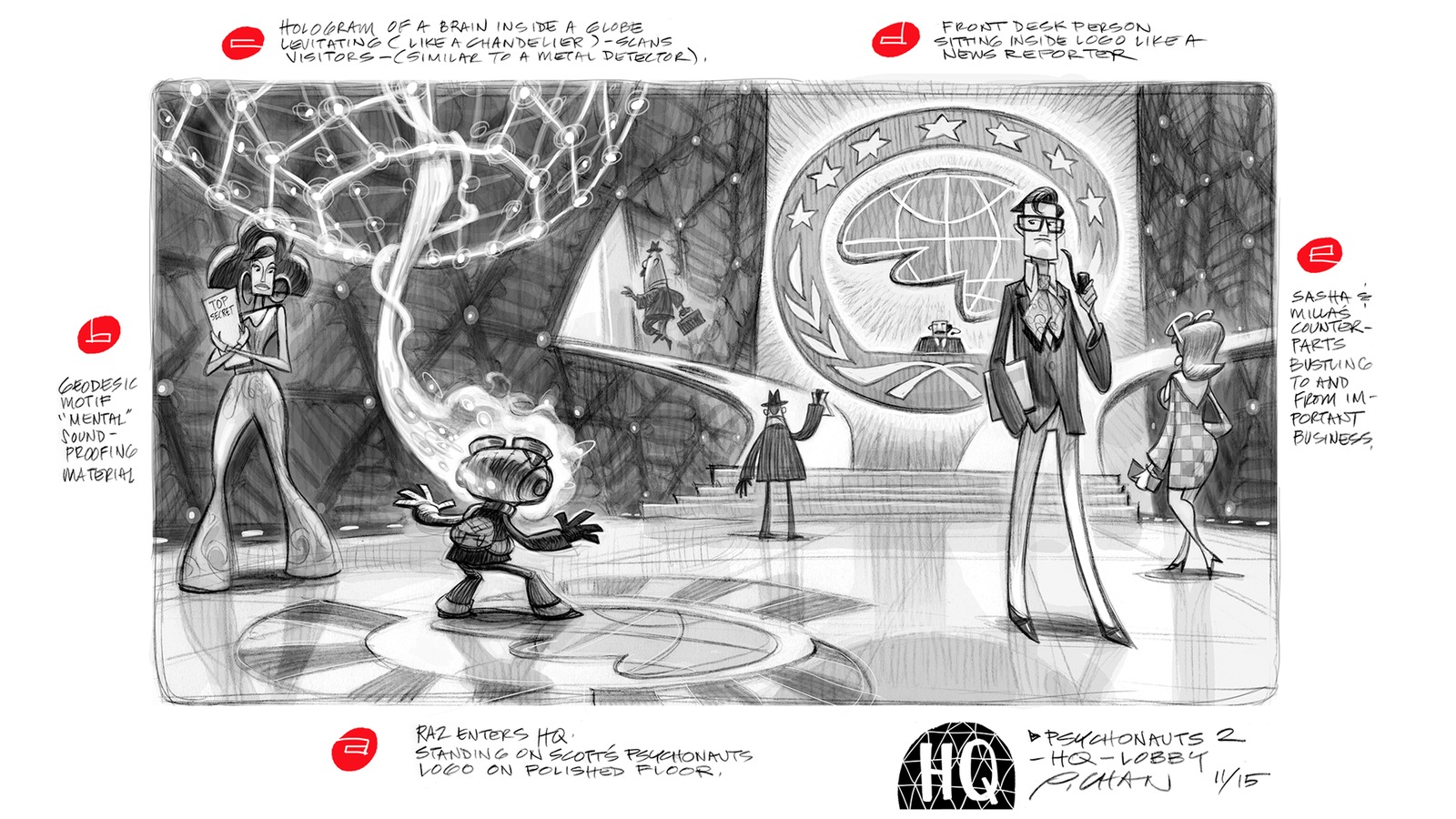
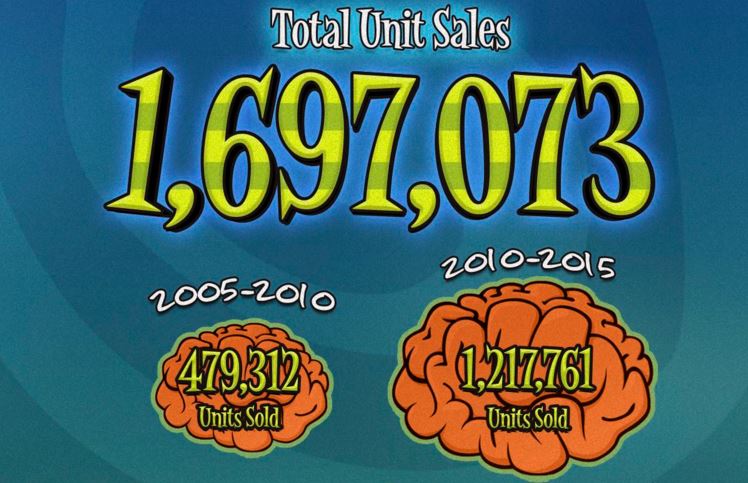
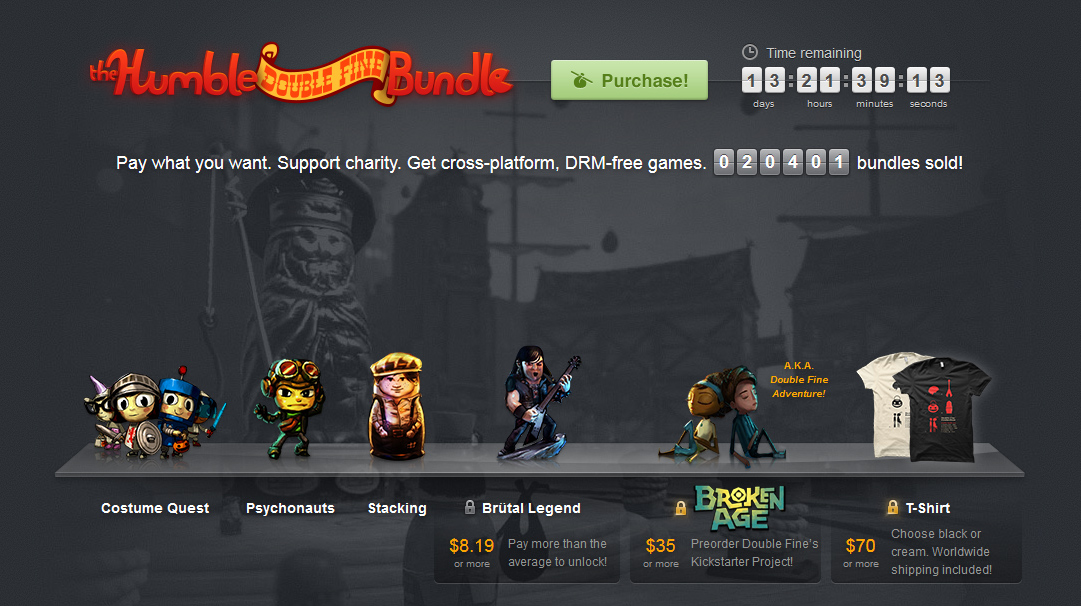

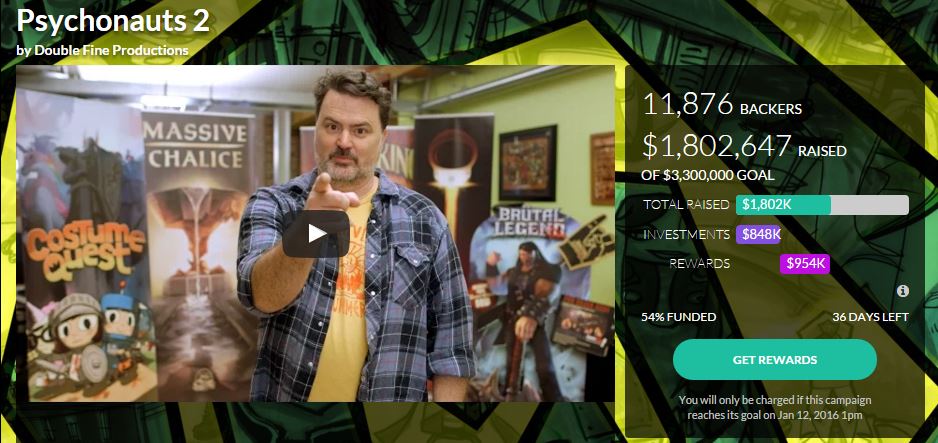
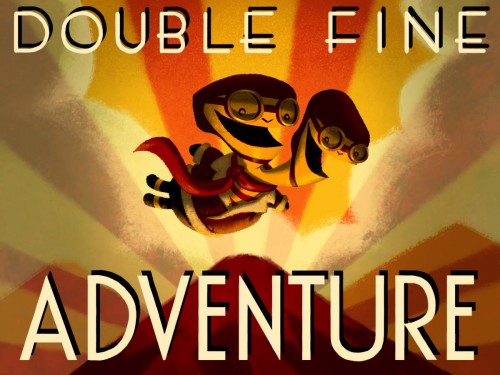



Hmm…despite Tim Schafer odd track record, I could see people backing this project if their fans of Double Fine’s previous works. However, the fact that over a million of its sales came from online discounts and bundles over a period of five years, seriously skews the numbers. Backing this project looks risky, and I don’t even want to think about the investors 🙁
There is no doubt that Double Fine has produced some great games over the years. It’s just a little disappointing to me to see people continue to jump at campaigns which have very little information. I guess there are certain games that would cause that reaction in me as well (ex: if Silent Hills came to Kickstarter). Wah.
I will be keeping track of this campaign and am hoping for the best end result, but we shall see how everything plays out.
I’ve been keeping track of backer and pledge numbers since the campaign went live, and there are some interesting metrics here. It seems backer enthusiasm is slowing (as you’d expect from a crowdfunding campaign that opens with a bang), whereas (comparatively) more investors are joining the party. Average pledge levels are fairly constant (around USD 77.50), whereas the average investment has been shifting between 1,350 and 1,250 dollars over the last days. It should also be noted that investment wasn’t cut off at 1 million dollars, as the statement in your previous Fig report implied. Did they get the legal green light for their new funding method since then?
I have to say that it’s kinda weird to see this kind of enthusiasm in the face of all those numbers. “Psychonauts 2” needs to sell 700,000 units at launch price to break even, compared to less than 500,000 units sold of “Psychonauts” over the product’s initial lifespan (2005 to 2010). Sure, it might work, but at that point, investors still haven’t earned a penny. On the contrary, they’ve probably lost money on taxes, and afterwards, they only get 40% of the initial royalties. By the way: The break-even point at the initial royalty rate would be USD 13,675,200, but starting at USD 13,330,000, royalties are decreased from 5 dollars to 2 dollars per USD 1,000 investment and 68,376 dollars (adjusted!) gross revenue. In case you’re wondering, that’s 0.007% royalties per 1,000 dollars investment initially, or 0.003% after the cut.
Sure, Double Fine hopes for Psychonauts 2 to be a great hit (the company desperately needs one), but if it sells the same numbers at full price as Psychonauts 1 did at all price points across the span of 5 years, an investor of 1,000 dollars only made back 718 dollars. Congratulations, you just lost 280 dollars before taxes! And even when DF inevitably makes another 3 million dollars in sales, 0.007 percent only gets you another 210 of those after… what? 4 years from now?
By the way, some of the sales numbers of Humble Bundles including Psychonauts are
– Humble Bundle V: 599,000 units
– The Humble Double Fine Bundle: 151,000 units
– Summer Games Done Quick 2014 Bundle: 3,000 units
(from Wikipedia).
P.S.: Phew. I hope I don’t have any miscalculations in there. :-p
There is no reason to think that Psychonauts 2 will have initial sales close to first one. Franchise really did became way more famous after the fact.
Also the main platform for Psychonauts 1 was the first Xbox and that was not a good platform for getting hit games.
That is definitely true (although the game was quickly ported to PS2), and Majesco might not have been the ideal match for a non-mainstream game.
However, from an investor point of view (I’m not talking about regular backers here), the proposal is not all that attractive. Let’s say everyone who bought Psychonauts 1 at some point, minus the people who only got it because it was in a bundle, will buy Psychonauts 2 at full price. I’ll also deduct 20,000 backers of this campaign, because they’ll get the game “for free”, so let’s assume there are 950,000 sales at full price. Would you agree that this is very close to a best-case scenario?
In this scenario, investors who give Double Fine 1,000 dollars now will receive USD 1,154 over the first year after release, i. e. 2019. That’s 15.4% interest over the span of 4 years, or 3.6% per annum. In the current climate, that’s respectable, but keep in mind that this is not a guaranteed amount and that you might just as well lose money. I’d say this proposal warrants a discussion like ours…
I think it’s like this: Psychonauts is NOT a good money investment if you actually want good profits. It’s more in vain of “If you love Psychonauts than you can help make a sequel, almost certainly get your money back AND probably even get some tiny profit”.
That’s a pretty good way to think about it. People investing in Psychonauts (hopefully) have this mindset. It will certainly be interesting to analyze this project once the game is finally available.
I have not heard anything (from press releases or otherwise) that Fig has the greenlight on their new funding method yet. So, I wish I had an answer for you there but as for now it’s a bit of a mystery.
You know, in some respect, I feel that many are still treating this campaign like a Kickstarter project and not “expecting” anything from it. With that said, having to click and say you want to legitimately INVEST in this game implies something totally different. I don’t know, maybe it’s just like folks wanting to be a part of a game’s development in a more serious way. As Лев Гринберг has mentioned, it could simply be a case of people doing it out of love than actual investment savvy (great news for Fig! 😛 ).
Thanks for the numbers on a couple of bundles including Psychonauts! My data-obsessed brain wishes that ALL bundle numbers were kept but it’s basically up to the community to keep that information around. In any case, that Humble Bundle V count is staggering, and just helps to prove that tons of sales does not equate to tons of cash.
It has all the information we need: people behind one of the best games ever is making a sequel. There really is no need for more information then “The guys you know and trust will do what you know they can do great”. Track record really is more reliable than any trailers here.
You are totally right! Double Fine already has 1) tons of experience with modern game dev and 2) experience with crowdfunding so I have faith they can make Psychonauts 2 worth our while.
The question I have is will it sell tons more than Psychonauts did in a much shorter time span (and not at super deep discounts)? If it does, then investors will be very pleased, but it remains to be seen how hungry non-backers will be to purchase once it’s out in a few years. Hopefully I’ll be able to revisit this article then!
Broken Age was interesting because the whole premise was that Schafer had no idea what he was going to create. He only started work on it after the game was funded. It was a fun experiment, but getting so much more money than they expected without having a plan really screwed them over I think. This is a much more concrete idea. If this were on Kickstarter, I wouldn’t have a problem backing it. But since it’s Fig, I don’t know…
Honestly, I’m more curious as to what the purpose of the game is. Is Psychonauts 2 being made because Schafer wants it made, and feels now is the time? Or is it because he wants to establish Fig, which he works for (and also Justin Bailey used to work for DF). No doubt Schafer always wanted to make a sequel, but the timing and the platform feel a bit… off to me.
Most definitely. I mean, the fact that Broken Age needed more money, had to be split into two parts to (sort of) meet release dates and all that definitely made some folks unhappy. But it appears they’re much more prepared for a crowdfunding campaign this time around.
I have to wonder exactly how long Psychonauts 2 was planned to come to Fig. Because, as far as was announced previously, Harmonix’s game was supposed to come to Fig in December. At what point did they decide they had to move Psychonauts 2 into the slot? I personally feel it was positioned right now as they felt Fig was struggling (after the first game Outer Wilds had tepid success and second project failed outright).
This just occurred to me: Does anyone know if investors will get a copy of the game on top of their royalties, or will they have to deduct another 40 dollars from their earnings (only if they’re fans, of course)? :-/
That is something I’ve been trying to find out via the Fig site for a bit now. As far as I can tell, opting for the investment option is just that – investment. No game or other rewards are included no matter how much you invest. I could be wrong, but they don’t seem to make a big deal of suggesting otherwise.
[…] on Broken Age, and over a decade of eager anticipation, Double Fine finally did it. They announced Psychonauts 2 in December 2015, to be written and directed by Schafer himself. The campaign would be radically […]